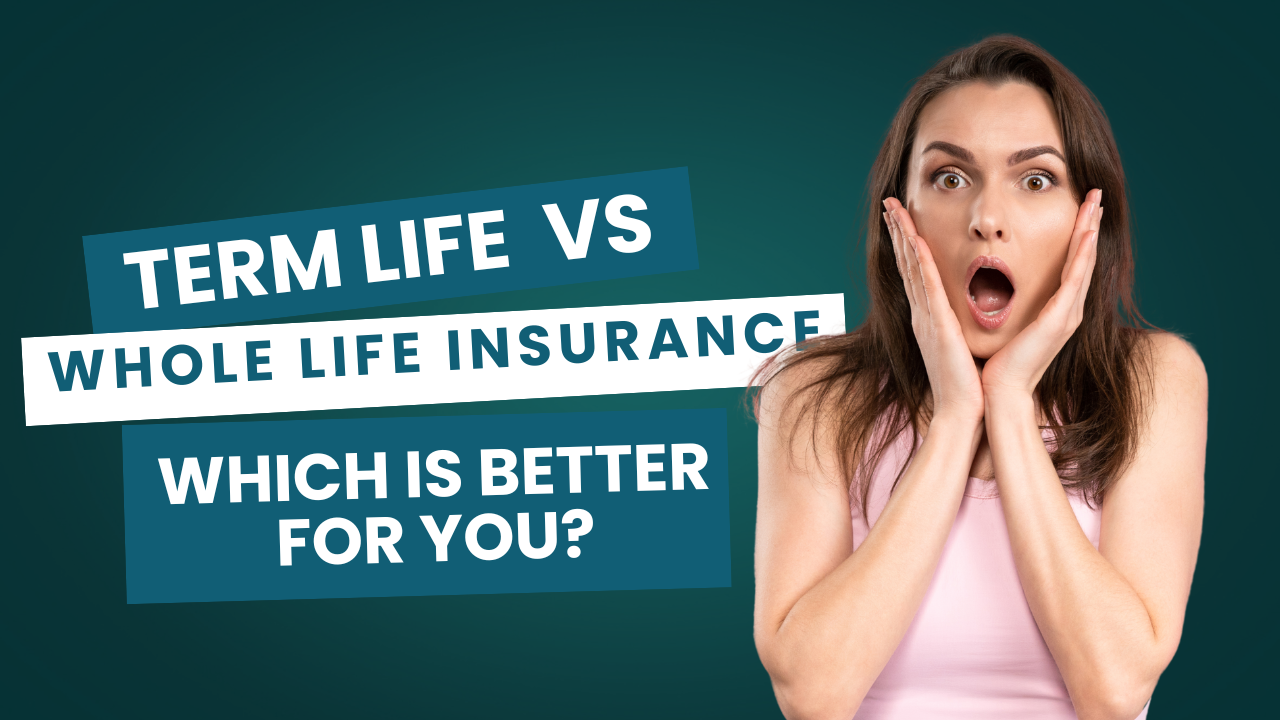Choosing the right life insurance policy is one of the most important financial decisions you’ll ever make. Whether you’re protecting a growing family or planning your estate, the debate between Term Life vs Whole Life Insurance often takes center stage. Both types of policies offer valuable protection, but they work very differently—and the best choice depends on your goals, budget, and personal circumstances.
This guide breaks down the key features, pros and cons, and practical use cases of term and whole life insurance to help you make an informed decision.
What Is Life Insurance?
Life insurance is a contract between you and an insurance company. You pay regular premiums, and in return, the insurer promises a tax-free payout—called a death benefit—to your beneficiaries upon your passing. This payout can help replace income, cover debts, pay final expenses, and ensure your loved ones’ financial stability.
What Is Term Life Insurance?
Term life insurance provides coverage for a fixed period—typically 10, 20, or 30 years. If you pass away during the term, your beneficiaries receive the death benefit. If you outlive the policy, the coverage ends unless you renew or convert it.
Key Features of Term Life Insurance:
-
Affordable premiums
-
No cash value accumulation
-
Fixed term length (e.g., 20 years)
Pros:
-
Lower cost for high coverage amounts
-
Simple and easy to understand
-
Ideal for temporary needs like mortgage or child support
Cons:
-
No payout if you outlive the term
-
No savings or investment component
-
Renewal may become costly with age or health changes
What Is Whole Life Insurance?
Whole life insurance offers lifelong protection and includes a cash value component that grows over time. As long as you pay the fixed premiums, your beneficiaries are guaranteed a death benefit, and you can access the cash value through loans or withdrawals.
Key Features of Whole Life Insurance:
-
Lifetime coverage
-
Builds tax-deferred cash value
-
Fixed premiums
Pros:
-
Guaranteed death benefit
-
Cash value can be borrowed or used in emergencies
-
May earn dividends with certain insurers
Cons:
-
Much higher premiums than term life
-
More complex policy structure
-
Slower cash value growth in early years
Term Life vs Whole Life Insurance: Key Differences
| Feature | Term Life Insurance | Whole Life Insurance |
|---|---|---|
| Coverage Duration | 10–30 years (temporary) | Lifetime (permanent) |
| Premium Cost | Lower | Higher |
| Cash Value Accumulation | None | Yes |
| Policy Complexity | Simple | Complex |
| Best For | Short-term needs | Long-term wealth planning |
When to Choose Term Life Insurance
Term life is an excellent choice if you:
-
Have young children or a mortgage
-
Need budget-friendly coverage
-
Only want insurance for a specific timeframe
Examples:
-
A 30-year-old parent wants $500,000 in coverage until their kids finish college.
-
A couple with a 20-year mortgage needs coverage to protect their home.
When to Choose Whole Life Insurance
Whole life is ideal if you:
-
Want lifelong coverage
-
Need cash value to supplement retirement or emergencies
-
Are focused on estate planning or leaving a legacy
Examples:
-
A parent with a child who has special needs
-
A business owner creating a buy-sell agreement with partners
Cost Comparison: Term Life vs Whole Life Insurance
Let’s compare typical monthly premiums for a 30-year-old non-smoker wanting $500,000 in coverage:
-
Term Life (20-Year): ~$25/month
-
Whole Life: ~$300/month
Over 20 years:
-
Term Life Total: $6,000
-
Whole Life Total: $72,000
However, whole life builds cash value, which can be partially recovered or reinvested.
Common Misconceptions
-
“Whole life is always better because it lasts forever.”
Not true. The higher cost may not be justified unless you need lifelong coverage. -
“Term life is a waste of money.”
It’s like auto insurance—you hope not to use it, but it’s there to protect against financial disaster. -
“You can’t switch from term to whole.”
Actually, many term policies allow conversion to whole life without a medical exam.
A Middle Ground: Universal Life Insurance
Universal life insurance is a flexible hybrid. It offers adjustable premiums, death benefits, and a cash value component. It’s more customizable than whole life, but also more complex.
How to Choose the Right Policy
Ask Yourself:
-
Do I need coverage for a specific time period or my entire life?
-
What is my budget?
-
Do I want my policy to build savings?
Consider:
-
Your age and health
-
Your financial obligations (e.g., debt, dependents)
-
Your investment goals
Expert Tips for Choosing Life Insurance
-
Review annually: As your family or finances change, so should your coverage.
-
Buy young: Premiums are lower when you’re healthy.
-
Don’t over-insure: Choose a realistic coverage amount based on actual needs.
-
Work with an advisor: A licensed agent can help you weigh options.
Final Thoughts
When it comes to Term Life vs Whole Life Insurance, there’s no one-size-fits-all answer. Term life is great for affordable, straightforward protection during your high-responsibility years. Whole life is better suited for lifelong security, cash value growth, and long-term planning.
Take time to assess your goals, compare quotes, and speak with a financial professional. The right life insurance policy is more than just a death benefit—it’s a cornerstone of your financial legacy.
If you found this article helpful, also check out:
👉 How to Compare Health Insurance Plans
👉 Auto Insurance Coverage Explained
